 Elder Mariano Xutumil talks about the new beings, those who have achieved perfection. He also describes that there is not only a Calendar of Life (Cholq’ij), but also a Calendar of Death and how the degeneration of the seeds and the use of GMO’s is driving our nations to live under the influence of the Calendar of Death.
Elder Mariano Xutumil talks about the new beings, those who have achieved perfection. He also describes that there is not only a Calendar of Life (Cholq’ij), but also a Calendar of Death and how the degeneration of the seeds and the use of GMO’s is driving our nations to live under the influence of the Calendar of Death.
…In oral tradition it is said that the Alej and the Ayew are people who achieve perfection, it is what Hinduism calls nirvana. Obviously to reach the state of Alej and Ayew several things are required, for example the loneliness needed for the person to accomplish self-understanding and which allows that person to understand the Geo-Cosmos. It has its rules; to be able to reach the Ayew and the Alej there is the need to deprive oneself from all the harmful temptations or molecules that come into contact with a person, for example consumerism, the desire for things, materialism… …Ral Ch’och’ means son or daughter of the earth; it is sort of the first stage. That son or daughter of the earth will live from the earth, from his or her spiritual growth and after the stage of being a son or daughter of the earth the person will become a Ch’ol Winq (Alej or Ayew) who is the new being, the perfect being in this physical and tangible scenario. …The Maya Calendar or Sacred Calendar is the tracking of time in relation to the conception and development of a human being until the time of birth, which is of nine months. It is obviously telling us that from the time of conception of the fetus up until the birth there was a process of twenty cycles, we already know that there are 20 names (nawales) and 13 numbers, so that child, at the moment of birth will be born with his Ch’umilal which means his star, it is what in Nahuatl is called the Nahual, or star… In this calendar of life, because if we say Sacred Calendar the term will not necessarily be understood, it is not understood academically, I think we have to be a bit more practical in the teachings, because that cycle is actually a tracking of time, but in relation to the life of a human being, of the nine months, therefore, I call it the Calendar of Life… …The Calendar of Death is a calendar where there is much violence, vices, alterations in the persons order and what I understood is that when a person is born under the Calendar of Life and that person breaks the rules and principals of collective living of a nation, that person automatically stops living under the influence of the Calendar of Life and becomes influenced by the Calendar of Death… …The genetically modified foods are the work of a minority of wicked people who are degenerating the seeds. The improvement of the seeds is necessary, because it forms part of the evolutionary process of the plants, for example in Rabinal we know about several trees that have mutated, progressed or collapsed, but the ones who have to decide the improvement of genetic quality are the owners of that Maize, in this case the Mayab’ (Mayans), who are working on this; but we need transcendent people from the Ch’ol Winq or who have reached the Nirvana to be able to do this… …The nations and peoples of Guatemala are being victims of something that doesn’t belong to us, we are being victims of the degeneration of the seeds and we evidently know who the victimizers are. In this case, when we already have genetically modified foods practically the nations are living in a Calendar of Death…



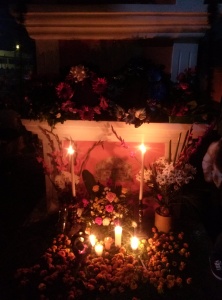



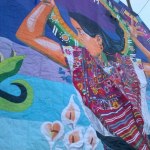




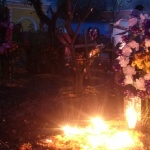






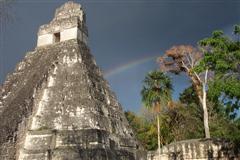
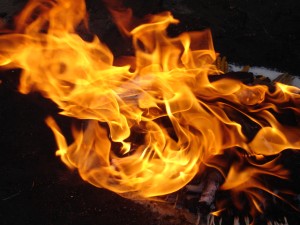
 and other sacred objects used for the divination, is the symbol of power of an Ajq’ij (spiritual guide). In this form of divination the Tz’ite’ is combined with the energies of the Sacred Cholq’ij Calendar enabling the Ajq’ij to clearly see how, why, when and where an event is going to happen. The Tz’ite is incredibly precise.
and other sacred objects used for the divination, is the symbol of power of an Ajq’ij (spiritual guide). In this form of divination the Tz’ite’ is combined with the energies of the Sacred Cholq’ij Calendar enabling the Ajq’ij to clearly see how, why, when and where an event is going to happen. The Tz’ite is incredibly precise.







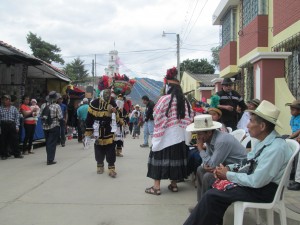




 B’alam was pretty excited to go with his grandfather to the mountain. They left very early in the morning, to the Sacred Mountain of Alux, to pick some Tz’ite’. These are the red beans used to communicate with Chuchqajaw (Mother and Father of the Universe). B’alam went to bed early so that he would wakeup as soon as his grandfather called him.
B’alam was pretty excited to go with his grandfather to the mountain. They left very early in the morning, to the Sacred Mountain of Alux, to pick some Tz’ite’. These are the red beans used to communicate with Chuchqajaw (Mother and Father of the Universe). B’alam went to bed early so that he would wakeup as soon as his grandfather called him.
 For 5,000 years the Maya have simultaneously used 20 different calendars for various purposes: agricultural, sacred, and predictions, amongst others.
For 5,000 years the Maya have simultaneously used 20 different calendars for various purposes: agricultural, sacred, and predictions, amongst others. On the first day of the year, people wear new clothes, with new energy to start the year without the burden of the previous one. They also light a new fire, as the old fire was put out at the beginning of the Wayeb’. During these five, days the fire, the comal (clay or metal dish used to make tortillas), the pot used to cook maize and the grinding stone rest – until a new fire is lit at the start of the new year.
On the first day of the year, people wear new clothes, with new energy to start the year without the burden of the previous one. They also light a new fire, as the old fire was put out at the beginning of the Wayeb’. During these five, days the fire, the comal (clay or metal dish used to make tortillas), the pot used to cook maize and the grinding stone rest – until a new fire is lit at the start of the new year.